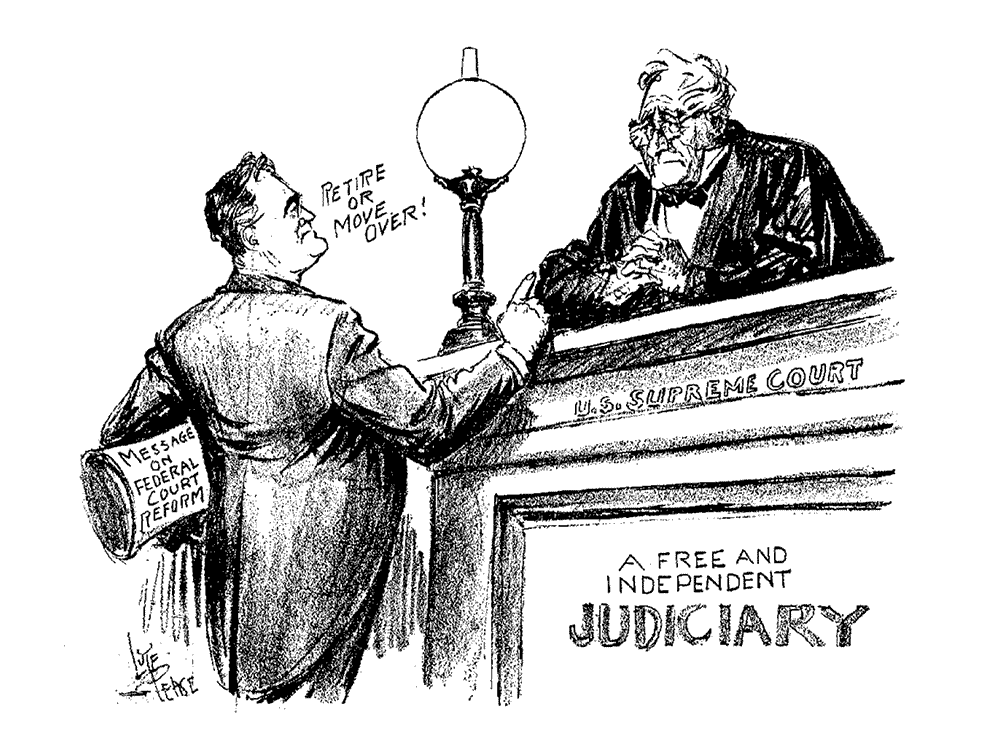ERA 8: The Great Depression and World War II (1929–1945)
FDR vs. the Supreme Court, by Merlo J. Pusey
Guiding Questions
How does FDR challenge the Constitution with his New Deal legislation and court-packing plan?
How did FDR’s thinking compare to the Federalists’ thinking with regard to “separation of powers?”
When is it okay for one of the three branches to “overstep” their boundaries defined by “separation of powers?"

FDR vs. the Supreme Court
Teacher-to-Teacher
FDR is well-known among students of American history for his court packing plan, which was an attempt to dilute the judicial power of a conservative Court. Attached to that event is the opportunity for students to learn more about the topic of separation of powers. Specifically, students are provided the chance to read about why the Founders provided for a threebranch system of government on the national level and the historical evidence that points to that being the wisest choice. Students can wrestle with the way in which the separation of powers prevents any one branch from exercising the dominant role of any other branch in an attempt to keep an internal check on government power. In addition, students are also able to read as to why this separation was not intended to be an absolute one and debate whether or not that is a wise political move in the design and function of the national government.
- F.D.R. Vs. The Supreme Court (April 1958 | Volume: 9, Issue: 3) articles_ah
- Montesquieu The Spirit of the Laws Book XI- Excerpts historical_documents
- U.S. Constitution historical_documents
- Federalist No. 47 historical_documents
- Federalist No. 48 historical_documents
- Statement by Frank E. Gannett historical_documents
- Fireside Chat 9: On ‘Court-Packing’ historical_documents

